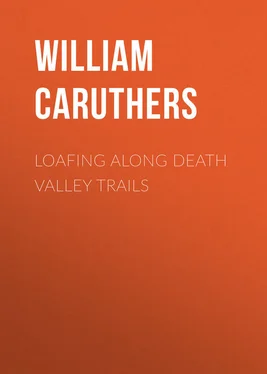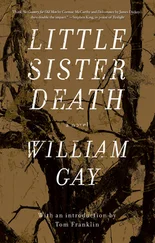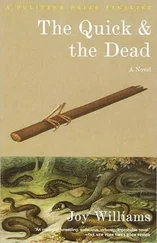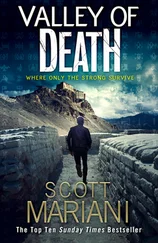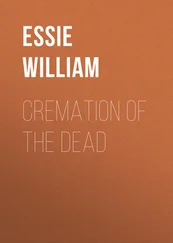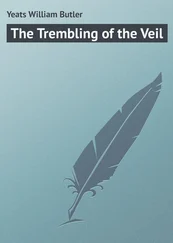William Caruthers - Loafing Along Death Valley Trails
Здесь есть возможность читать онлайн «William Caruthers - Loafing Along Death Valley Trails» — ознакомительный отрывок электронной книги совершенно бесплатно, а после прочтения отрывка купить полную версию. В некоторых случаях можно слушать аудио, скачать через торрент в формате fb2 и присутствует краткое содержание. Жанр: foreign_language, foreign_prose, на английском языке. Описание произведения, (предисловие) а так же отзывы посетителей доступны на портале библиотеки ЛибКат.
- Название:Loafing Along Death Valley Trails
- Автор:
- Жанр:
- Год:неизвестен
- ISBN:нет данных
- Рейтинг книги:5 / 5. Голосов: 1
-
Избранное:Добавить в избранное
- Отзывы:
-
Ваша оценка:
- 100
- 1
- 2
- 3
- 4
- 5
Loafing Along Death Valley Trails: краткое содержание, описание и аннотация
Предлагаем к чтению аннотацию, описание, краткое содержание или предисловие (зависит от того, что написал сам автор книги «Loafing Along Death Valley Trails»). Если вы не нашли необходимую информацию о книге — напишите в комментариях, мы постараемся отыскать её.
Loafing Along Death Valley Trails — читать онлайн ознакомительный отрывок
Ниже представлен текст книги, разбитый по страницам. Система сохранения места последней прочитанной страницы, позволяет с удобством читать онлайн бесплатно книгу «Loafing Along Death Valley Trails», без необходимости каждый раз заново искать на чём Вы остановились. Поставьте закладку, и сможете в любой момент перейти на страницу, на которой закончили чтение.
Интервал:
Закладка:
William Alexander Caruthers
Loafing Along Death Valley Trails / A Personal Narrative of People and Places
DEDICATION
To one who, without complaint or previous experience with desert hardships, shared with me the difficult and often dangerous adventures in part recorded in this book, which but for her persistent urging, would never have reached the printed page. She is, of course, my wife – with me in a sense far broader than the words imply: always – always .
THIS BOOK
This book is a personal narrative of people and places in Panamint Valley, the Amargosa Desert, and the Big Sink at the bottom of America. Most of the places which excited a gold-crazed world in the early part of the century are now no more, or are going back to sage. Of the actors who made the history of the period, few remain.
It was the writer’s good fortune that many of these men were his friends. Some were or would become tycoons of mining or industry. Some would lucklessly follow jackasses all their lives, to find no gold but perhaps a finer treasure – a rainbow in the sky that would never fade.
It is the romance, the comedy, the often stark tragedy these men left along the trail which you will find in the pages that follow.
Necessarily the history of the region, often dull, is given first because it gives a clearer picture of the background and second, because that history is little known, being buried in the generally unread diaries of John C. Fremont, Kit Carson, Lt. Brewerton, Jedediah Smith, and the stories of early Mormon explorers.
It is interesting to note that a map popular with adventurers of Fremont’s time could list only six states west of the Mississippi River. These were Texas, Indian Territory, Missouri, Oregon, and Mexico’s two possessions – New Mexico and Upper California. There was no Idaho, Utah, Nevada, Arizona, Washington, or either of the Dakotas. No Kansas. No Nebraska.
Sources of material are given in the text and though careful research was made, it should be understood that the history of Death Valley country is argumentative and bold indeed is one who says, “Here are the facts.”
With something more than mere formality, the writer wishes to thank those mentioned below:
My longtime friend, Senator Charles Brown of Shoshone who has often given valuable time to make available research material which otherwise would have been almost impossible to obtain. Of more value, have been his personal recollections of Greenwater, Goldfield, and Tonopah, in all of which places he had lived in their hectic days.
Mrs. Charles Brown, daughter of the noted pioneer, Ralph Jacobus (Dad) Fairbanks and her sister, Mrs. Bettie Lisle, of Baker, California. The voluminous scrapbooks of both, including one of their mother, Celestia Abigail Fairbanks, all containing information of priceless value were always at my disposal while preparing the manuscript.
Dad Fairbanks, innumerable times my host, was a walking encyclopedia of men and events.
One depository of source material deserves special mention. Nailed to the wall of Shorty Harris’ Ballarat cabin was a box two feet wide, four feet long, with four shelves. The box served as a cupboard and its calico curtains operated on a drawstring. On the top shelf, Shorty would toss any letter, clipping, record of mine production, map, or bulletin that the mails had brought, visitors had given, or friends had sent. And there they gathered the dust of years.
Wishing to locate the address of Peter B. Kyne, author of The Parson of Panamint, whose host Shorty had been, I removed these documents and discovered that the catch-all shelf was a veritable treasure of little-known facts about the Panamint of earlier days.
There were maps, reports of geologic surveys, and bulletins now out of print; newspapers of the early years and scores of letters with valuable material bearing the names of men internationally known.
It is with a sense of futility that I attempt to express my indebtedness to my wife, who with a patience I cannot comprehend, kept me searching for the facts whenever and wherever the facts were to be found; typing and re-typing the manuscript in its entirety many times to make it, if possible, a worthwhile book.
Ontario, California, December 22, 1950Chapter I
A Foretaste of Things to Come
In the newspaper office where the writer worked, was a constant parade of adventurers. Talented press agents; promoters; moguls of mining and prospectors who, having struck it rich, now lived grandly in palatial homes, luxurious hotels or impressive clubs. In their wake, of course, was an engaging breed of liars, and an occasional adventuress who by luck or love had left a boom town crib to live thereafter “in marble halls with vassals” at her command. All brought arresting yarns of Death Valley.
For 76 years this Big Sink at the bottom of America had been a land of mystery and romantic legend, but there had been little travel through it since the white man’s first crossing. “I would have starved to death on tourists’ trade,” said the pioneer Ralph (Dad) Fairbanks.
More than 3,000,000 people lived within a day’s journey in 1925, but excepting a few, who lived in bordering villages and settlements, those who had actually been in Death Valley could be counted on one’s fingers and toes. The reasons were practical. It was the hottest region in America, with few water holes and these far apart. There were no roads – only makeshift trails left by the wagons that had hauled borax in the Eighties. Now they were little more than twisting scars through brush, over dry washes and dunes, though listed on the maps as roads. For the novice it was a foolhardy gamble with death. “There are easier ways of committing suicide,” a seasoned desert man advised.
I had been up and down the world more perhaps than the average person and this seemed to be a challenge to one with a vagabond’s foot and a passion for remote places. So one day I set out for Death Valley.
At the last outpost of civilization, a two-cabin resort, the sign over a sand-blasted, false-fronted building stressed: “Free Information. Cabins. Eats. Gas. Oil. Refreshments.”
Needing all these items, I parked my car and walked into a foretaste of things-to-come. The owner, a big, genial fellow, was behind the counter using his teeth to remove the cork from a bottle labeled “Bourbon” – a task he deftly accomplished by twisting on the bottle instead of the cork. “I want a cabin for the night,” I told him, “and when you have time, all the free information I can get.”
“You’ve come to headquarters,” he beamed as he set the bottle on the table, glanced at me, then at the liquor and added: “Don’t know your drinking sentiments but if you’d like to wet your whistle, take one on the house.”
While he was getting glasses from a cabinet behind the counter, a slender, wiry man with baked skin, coal-black eyes and hair came through a rear door, removed a knapsack strapped across his shoulders and set it in the farthest corner of the room. Two or three books rolled out and were replaced only after he had wiped them carefully with a red bandana kerchief. A sweat-stained khaki shirt and faded blue overalls did not affect an impression he gave of some outstanding quality. It may have been the air of self assurance, the calm of his keen eyes or the majesty of his stride as he crossed the floor.
My host glanced at the newcomer and set another glass on the table, “You’re in luck,” he said to me. “Here comes a man who can tell you anything you want to know about this country.” A moment later the newcomer was introduced as “Blackie.”
“Whatever Blackie tells you is gospel. Knows every trail man or beast ever made in that hell-hole, from one end to the other. Ain’t that right, Blackie?”
Читать дальшеИнтервал:
Закладка:
Похожие книги на «Loafing Along Death Valley Trails»
Представляем Вашему вниманию похожие книги на «Loafing Along Death Valley Trails» списком для выбора. Мы отобрали схожую по названию и смыслу литературу в надежде предоставить читателям больше вариантов отыскать новые, интересные, ещё непрочитанные произведения.
Обсуждение, отзывы о книге «Loafing Along Death Valley Trails» и просто собственные мнения читателей. Оставьте ваши комментарии, напишите, что Вы думаете о произведении, его смысле или главных героях. Укажите что конкретно понравилось, а что нет, и почему Вы так считаете.
